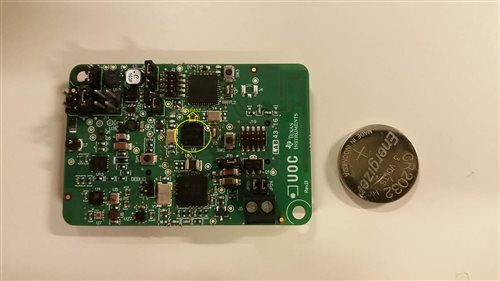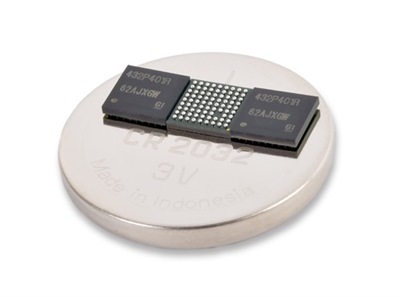SSZTAE7 february 2017 CC2640R2F
Sensing applications are getting physically smaller and smaller. Whether you’re designing a remote industrial sensor node that needs to be tucked away in a factory (Figure 1) or a sensor for the next smart wearable device, space is becoming a scarce resource.
On the other hand, there is an increasing need for integration and processing to be available locally at the microcontroller (MCU) or system level. Taking delocalized measurements from the rack or test bench directly into the nodes, combined with advanced processing capabilities to support local analytics, enables remote nodes to make more timely and informed decisions, minimizing communication latencies and mitigating communication link unavailability.
Both trends – decreased physical size, more integration – are equally attractive, but they don’t always work out in each other’s favor. Embedded application developers are burdened with picking the right products to fit their constraints, both physically and computationally.
 Figure 1 Space-constrained Industrial
Wireless Sensor Node
Figure 1 Space-constrained Industrial
Wireless Sensor NodeThe MSP432™ MCU family has expanded with a production-ready 80-pin ball-grid array (BGA) package, introducing the same high-performance capabilities of MSP432 MCUs into a tiny 5mm-by-5mm footprint (Figure 2) to fit the requirements of space-constrained industrial applications. Packing in a 1Msps successive approximation register (SAR)-based analog-to-digital converter (ADC), the MSP432 MCU in BGA package introduces best-in-class integrated analog performance of up to 16 effective number of bits (ENOB) into the realm of ultra-small microcomputing. The applications can sample better sensor data at higher precision and lower power without having to increase printed circuit board (PCB) size to accommodate external ADCs.
Additionally, the 48MHz ARM® Cortex®-M4F central processing unit (CPU) pairing with TI’s innovative processing algorithms allow the applications to directly process data on the spot, detecting trends and ultimately making smarter decisions quickly. A good example of local analytics is the MSP432 MCU speech recognizer library, which detects your voice without the need for an internet connection.
 Figure 2 MSP432 MCU in 5mm-by-5mm BGA
Packaging
Figure 2 MSP432 MCU in 5mm-by-5mm BGA
PackagingThe MSP432 MCU in BGA package can operate as the wireless host MCU when partnered with a wireless network processor that also comes in a tiny package such as the SimpleLink™ Bluetooth® low energy CC2640R2F wireless MCU in a wafer chip-scale package (WCSP). The partitioning allows each component to do what it does best: the CC2640R2F device in network processor mode provides a robust and ultra-low-power Bluetooth low energy link, while the MSP432 MCU can run additional Bluetooth profiles or protocols such as Bluetooth low energy for HomeKit technology while leaving an ample amount of its 256kB flash memory space free for application code. With analog and radio integration and processing capabilities, this “dynamic duo” can help Internet of Things (IoT) developers design highly integrated wireless sensor nodes with advanced sensing and measurement for demanding and space-constrained environments.
Additional Resources
- Learn more about MSP432 MCUs and order the production-ready BGA package from the product folder.
- Download the MSP432 software development kit and wireless plug-ins.
- Order the MSP432 MCU LaunchPad™ development kit.